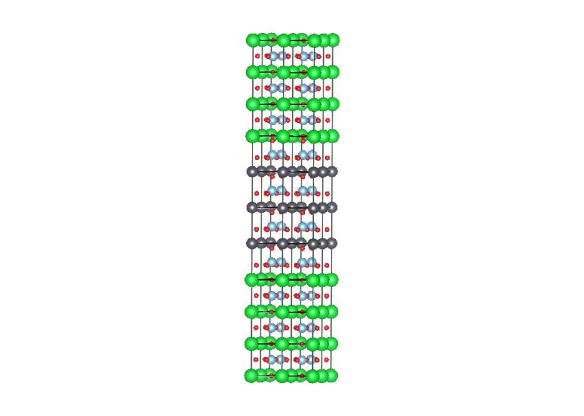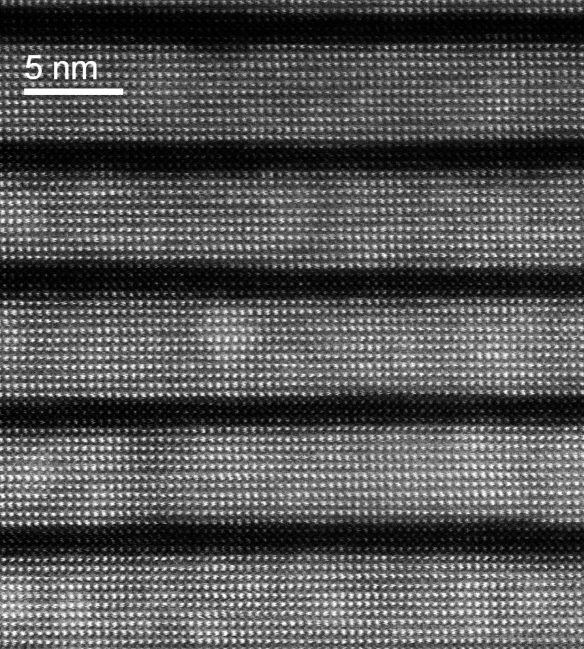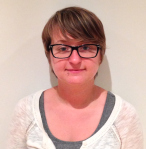It's a bird… it's a plane… it's a superstructure!
What does it look like?

This structure consists of four unit cells of SrTiO3 alternated with three unit cells of PbTiO3. The Sr atoms are green, Pb atoms are grey, Ti atoms are blue, and O atoms are red. Image generated by the VESTA (Visualisation for Electronic and STructural analysis) software http://jp-minerals.org/vesta/en/
What is it?
Regular Crystallography365 readers may remember the perovskite structure. Since this is a relatively simple crystal structure and can be found with a wide variety of atoms on the cube corners and centers, it's relatively easy to build "stacks" of alternating layers of different perovskites. When these stacks are layered in a repeated manner, this is called a superstructure.
Superstructures are exciting because of the many effects that occur due to the individual properties of the constituent layers and also because of how those layers interact. One of the most well-studied systems has been LaAlO3/SrTiO3. Even though both materials are insulators by themselves, when you alternate them in thin layers superconductivity appears at the interfaces!
The example above shows a superstructure alternating layers of PbTiO3/SrTiO3, and is actually an example of diarchetypal modular structure, being built by modules (layers here) taken from two different structures. PbTiO3 is a ferroelectric, meaning it has a native electric polarization (this comes from the O and Ti atoms being displaced from the unit cell center – which you can see if you look closely). When you reduce the number of PbTiO3 layers you may expect the superstructure to become less ferroelectric, but competing structural distortions of the individual PbTiO3 and SrTiO3 layers at the interface actually allow the whole system to sustain ferroelectricity even when the sample is made up of mostly non-ferroelectric SrTiO3.

A TEM image of a perovskite superstructure
Of course, superstructures don't have to just be made of perovskites. However, because all perovskites share a general form it is easy to alternate thin layers of different materials while ensuring that they maintain good crystal quality.
Where did this structure come from?
Both the crystal structure module and TEM image show PbTiO3/SrTiO3 superstructure. It was made by starting with the SrTiO3 structure (#9006864 in the Crystallography Open Database) and then adding a PbTiO3 layer (#9011192 in the Crystallography Open Database). The in-plane cell parameters of the PbTiO3 layer were confined to those of the SrTiO3 layer to simulate epitaxial strain. As a result the out-of-plane cell parameter of the PbTiO3 layer was made larger, which is observed experimentally.






